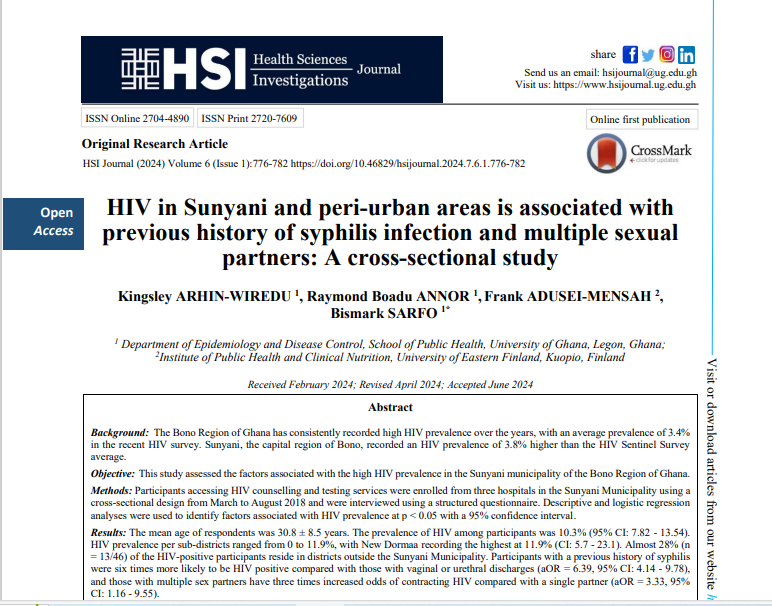HIV in Sunyani and peri-urban areas is associated with previous history of syphilis infection and multiple sexual partners- A cross-sectional study
Abstract
Background: The Bono Region of Ghana has consistently recorded increase in HIV prevalence over the years with an average prevalence of 3.4% in the recent HIV survey. Sunyani, the capital Region of Bono recorded an HIV prevalence of 3.8% higher than the National average. Against this background, this study assessed the factors associated with the high HIV prevalence in the Sunyani municipality in the Bono Region of Ghana.
Method: Participants (445) accessing HIV counselling and testing services were enrolled from three hospital in the Sunyani Municipality using cross-sectional design, from March to August 2018 and were interviewed using a structured questionnaire. Descriptive and logistic regressions analyses were used to identify factors associated with HIV prevalence at p < 0.05 with 95% confidence interval.
Results: The mean age of respondents was 30.8±8.5 years. The prevalence of HIV among participants was 10.3% (95% CI: 7.82-13.54). HIV prevalence per sub districts ranged from 0 to 11.9% with New Dormaa recording the highest of 11.9% (CI: 5.7-23.1). 28% (13/56) of the HIV positive participants reside in districts outside the Sunyani Municipality. Participants with previous history of syphilis were 6 times more likely to be HIV positive compared with those with vaginal or urethral discharges (aOR=6.39, 95% CI: 4.14-9.78), and those with multiple sex partners have 3 times increased odds of getting HIV than those with single partner (aOR=3.33, 95% CI: 1.16-9.55).
Conclusion: There was high prevalence of HIV in Sunyani municipality and surrounding districts. HIV prevalence was significantly associated with multiple partners and previous history of syphilis infection.


